
MEDIA RELEASES KAIKOHE SPEEDWAY RACE SEASON 2010
- 2011
Northland Age 16th August 2011
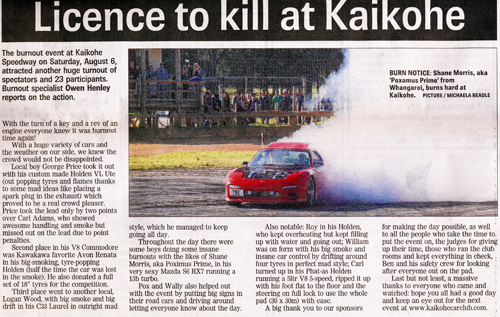
Northland Age 11th August 2011
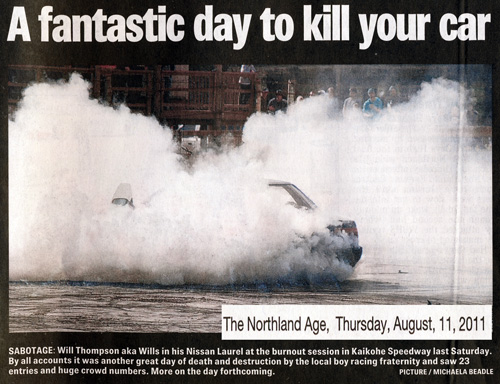
Northern News 17th August 2011
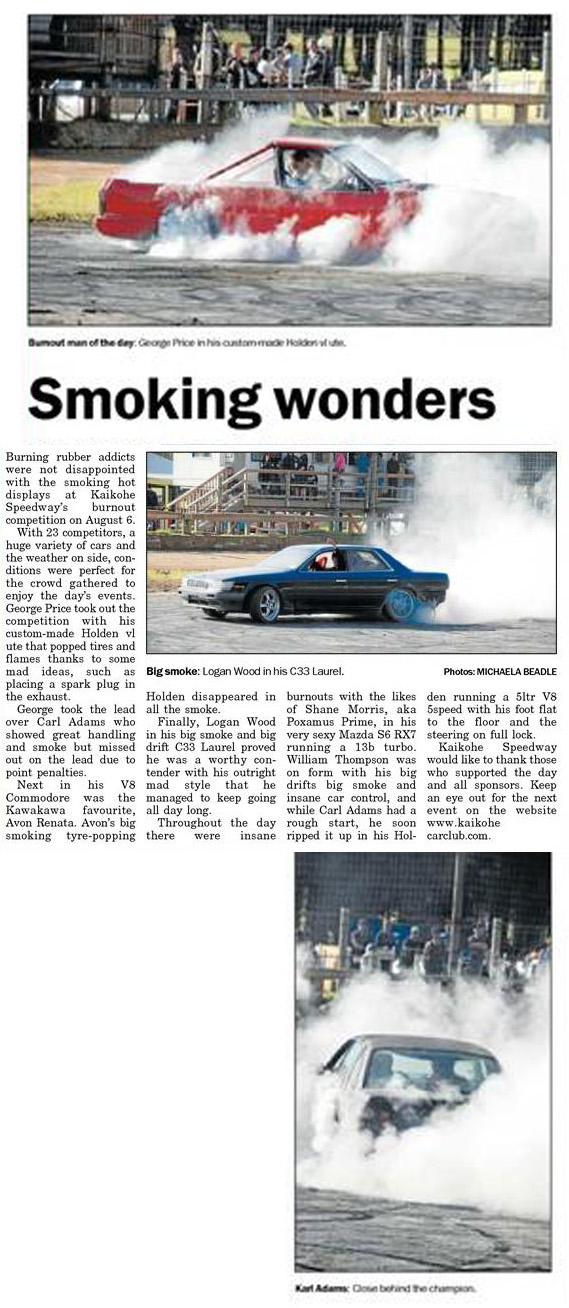
Northland Age 29th June 2011

Northern News 28th June 2011
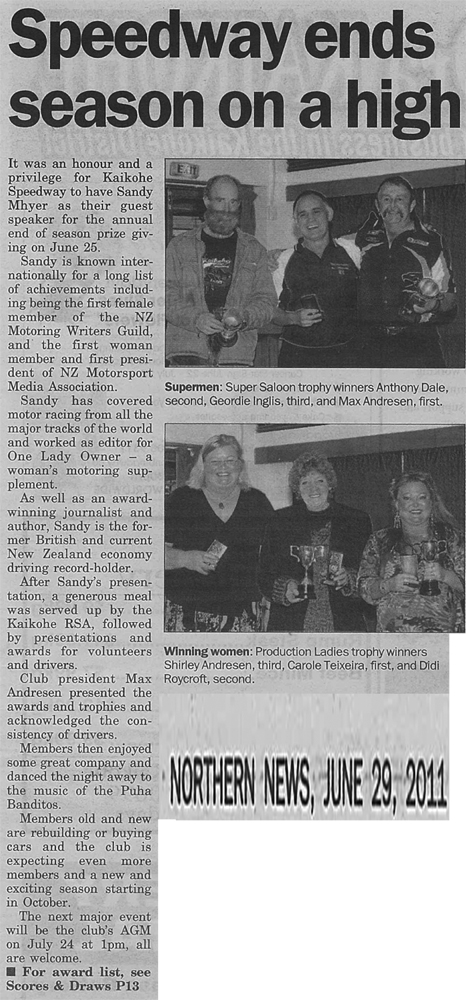

19th May 2011
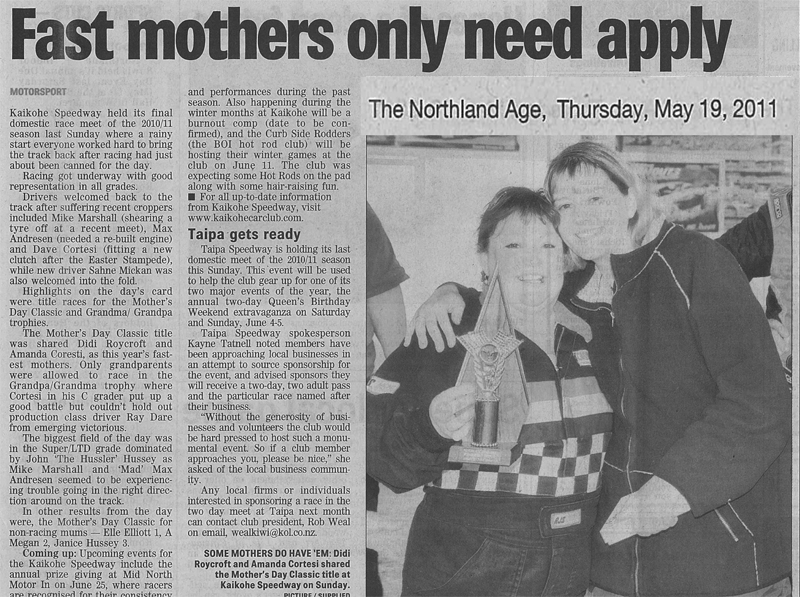
Northland Age 17th May 2011
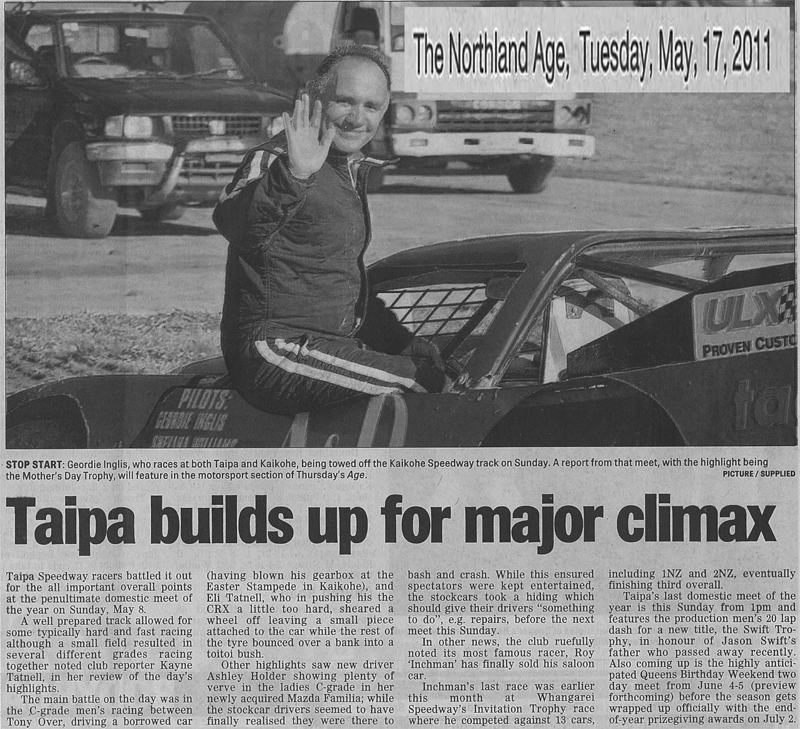
Northland Age 16 June 2011
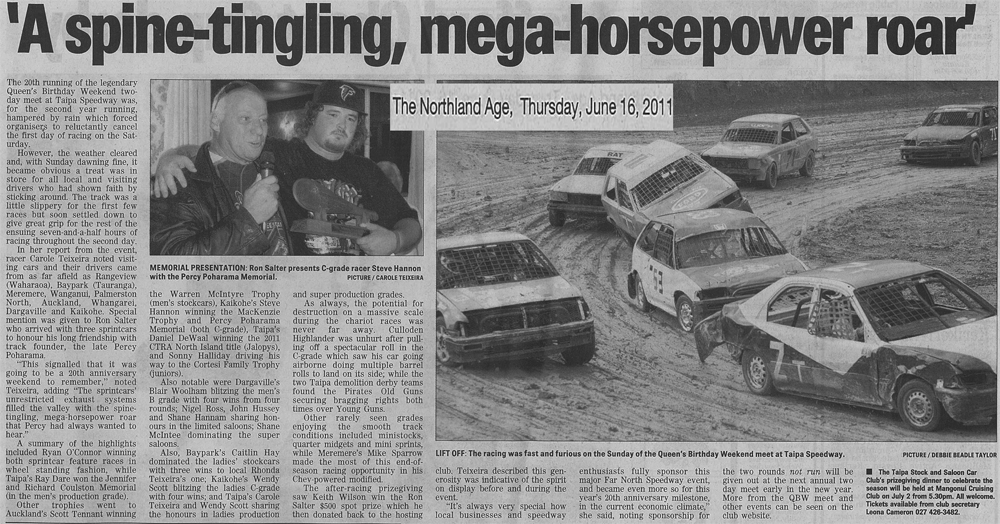
Northland Age April 2011

Northern News 4th May 2011
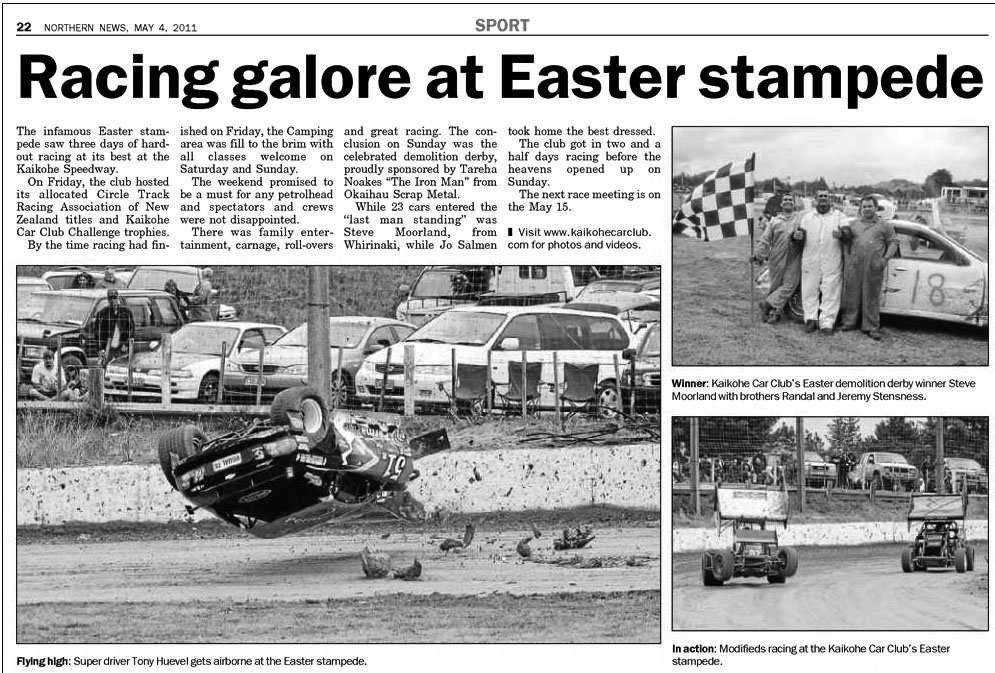
Northern News 4th May 2011
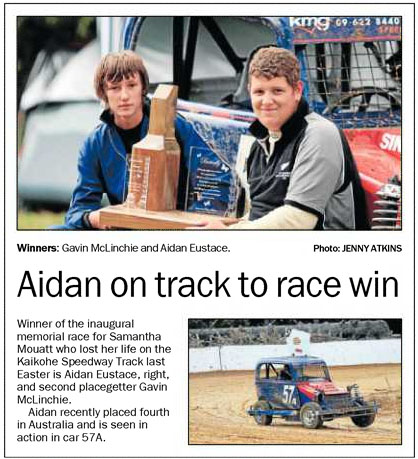
Northland Age 28th April 2011

Northland Age 21 April 2011
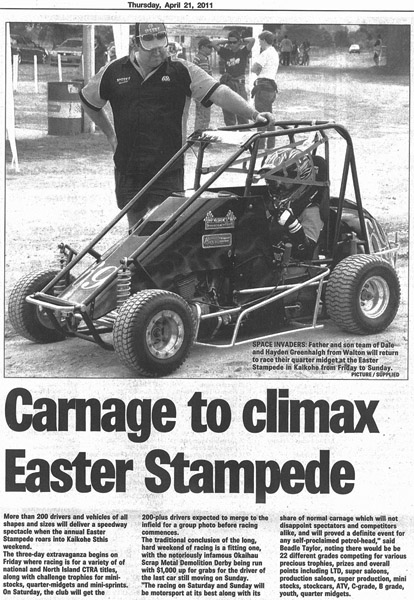
Northland Age 14th April 2011
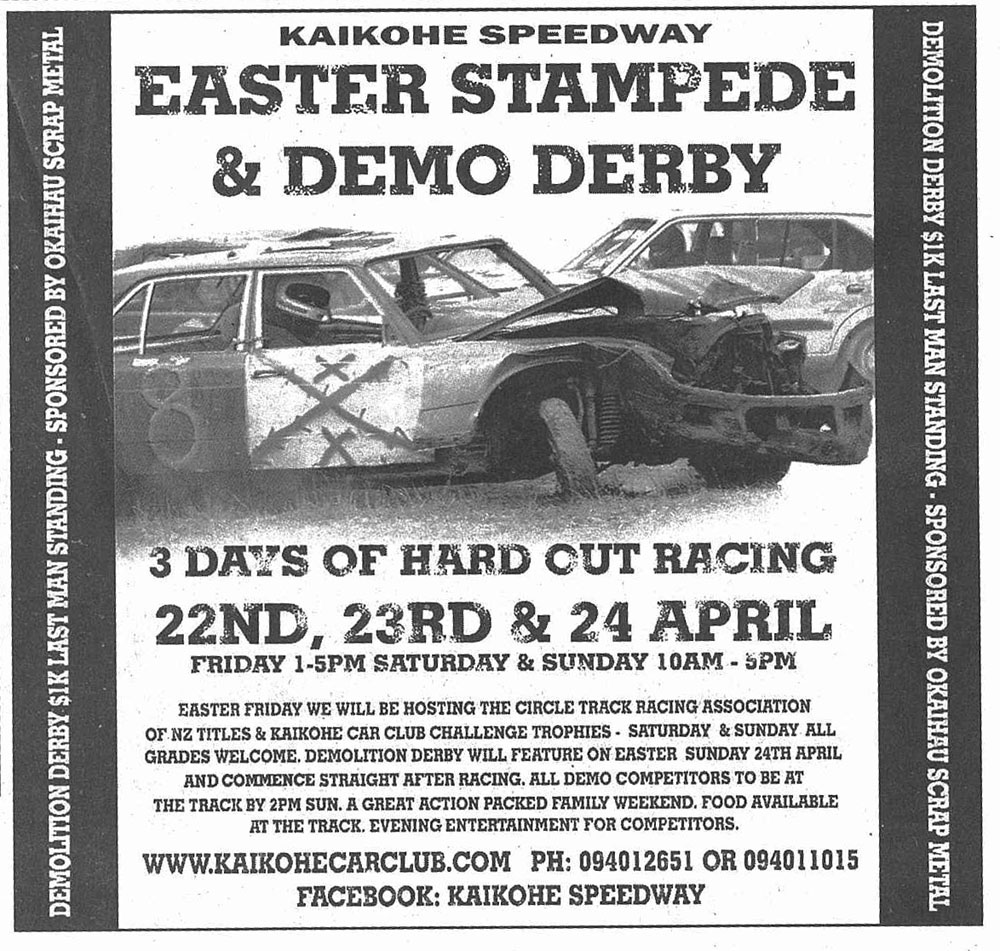

Northland Age 12th April 2011
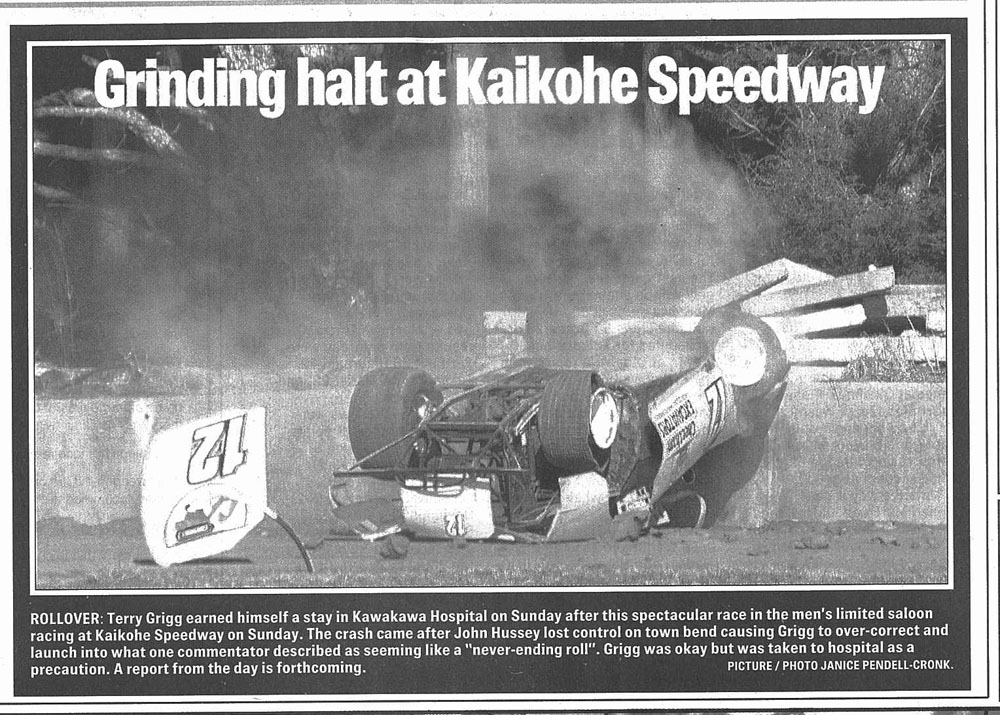
Northland Age 14th March 2011
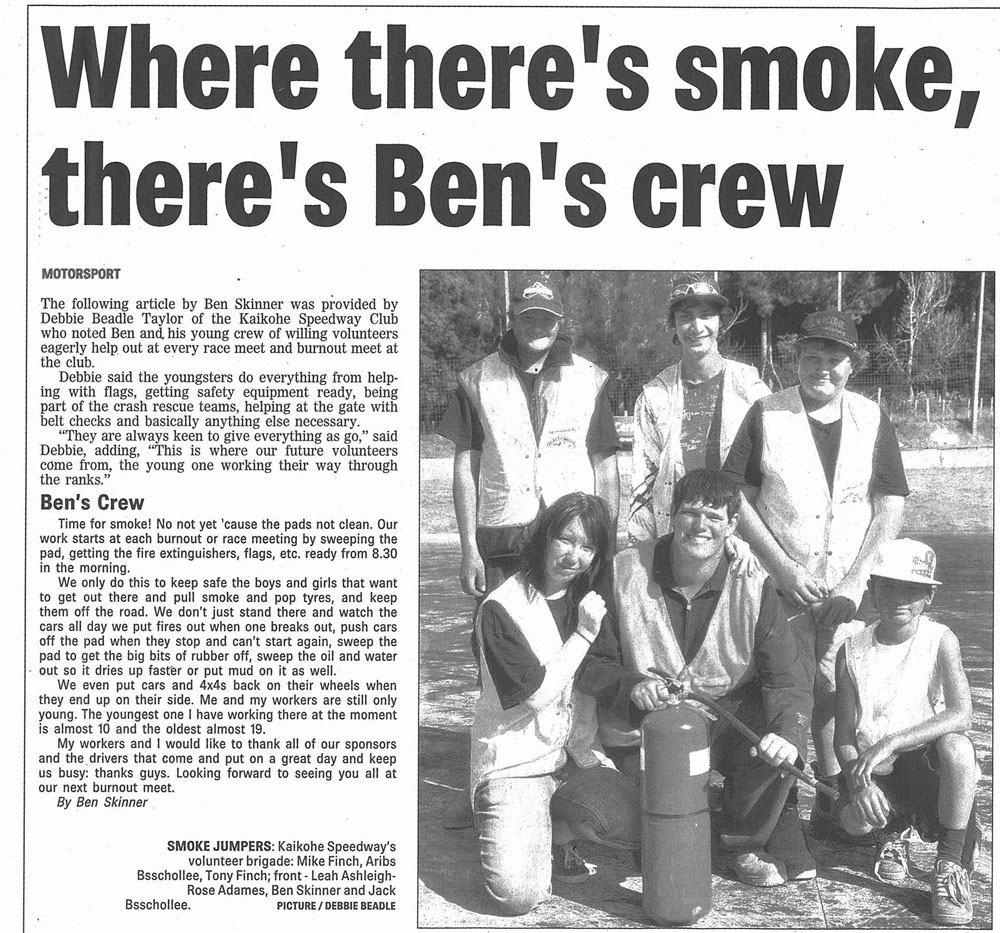
Northland Age March 2011
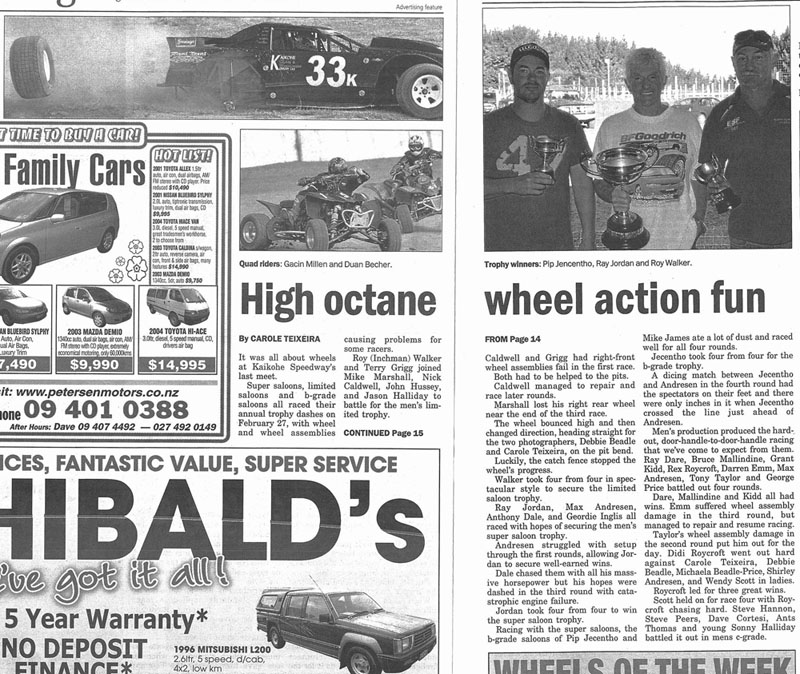
14th March 2011 Northland Age
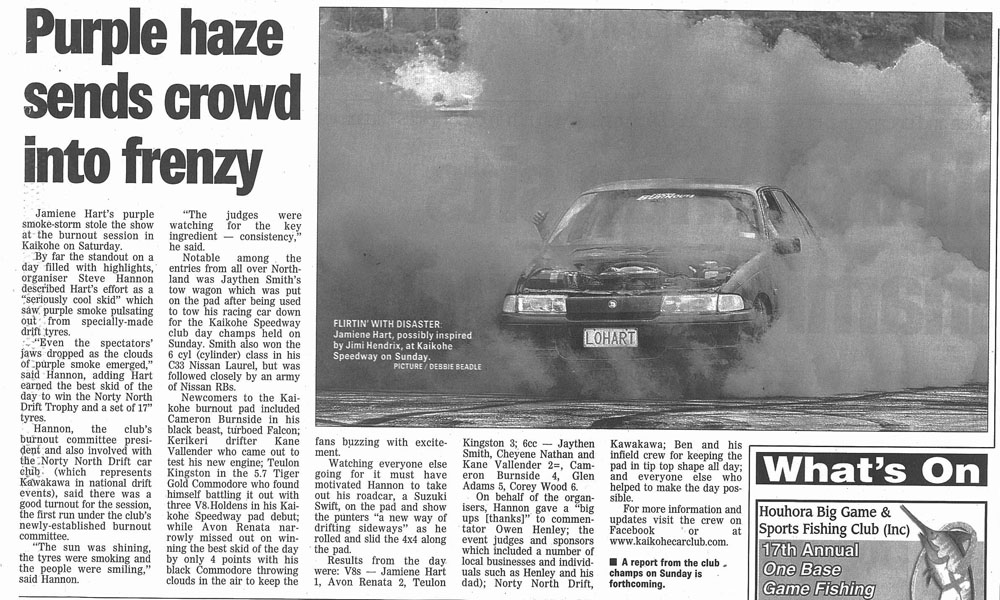 Northland Age March 2011
Northland Age March 2011
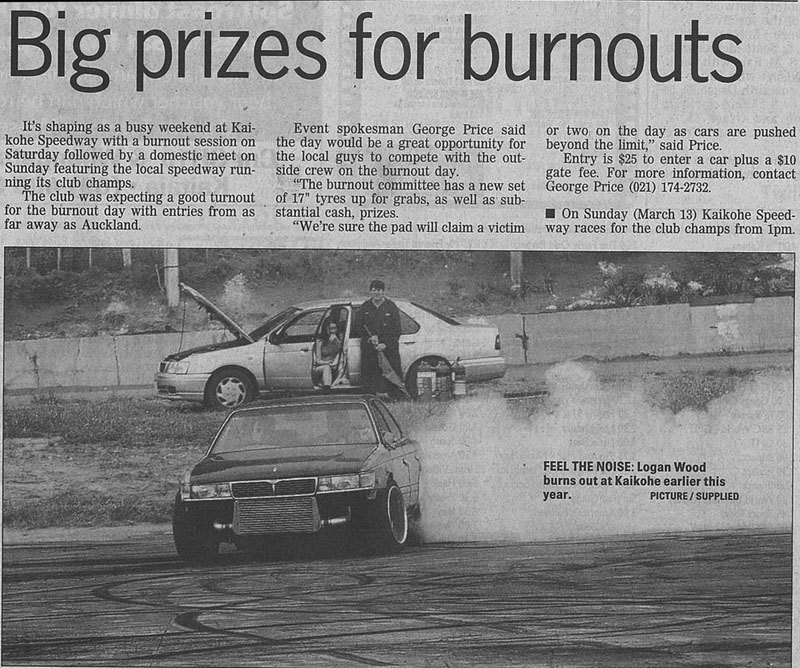
Northland Age March 2011
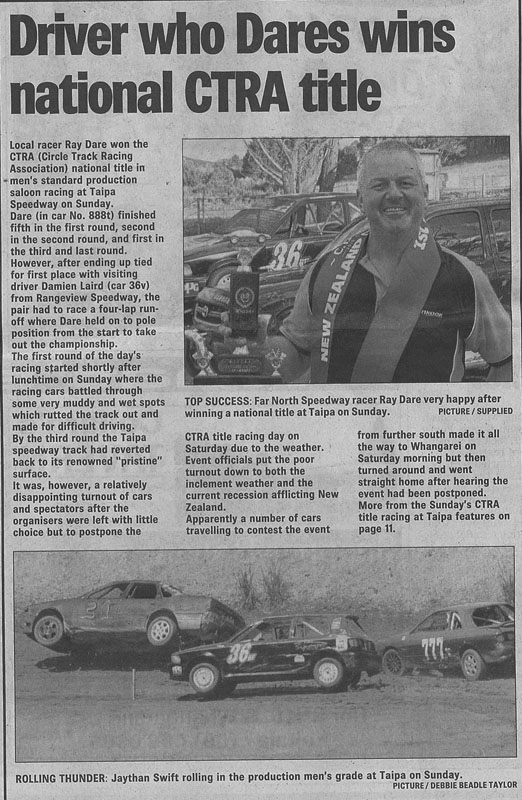
Northland Age February 2011

Northland Age 20 January 2011
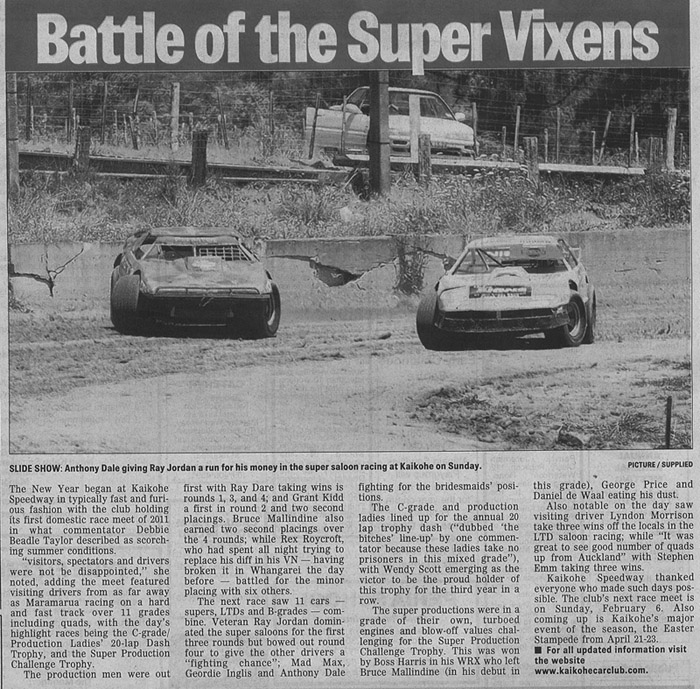
Northland Age 20 January 2011
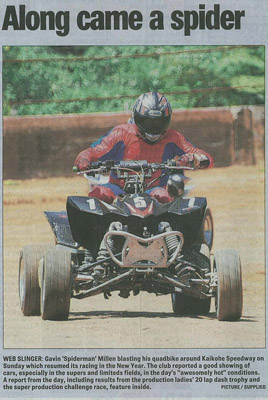
Northern News 26 January 2011

Northland Age 26 January 2011
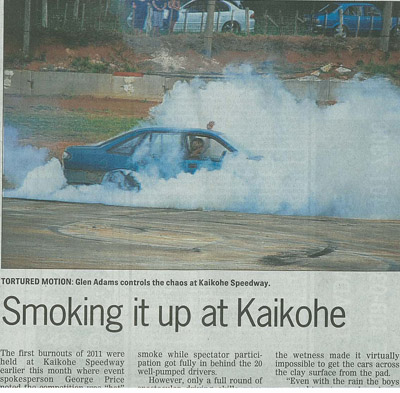
Northland Age 16th December 2010
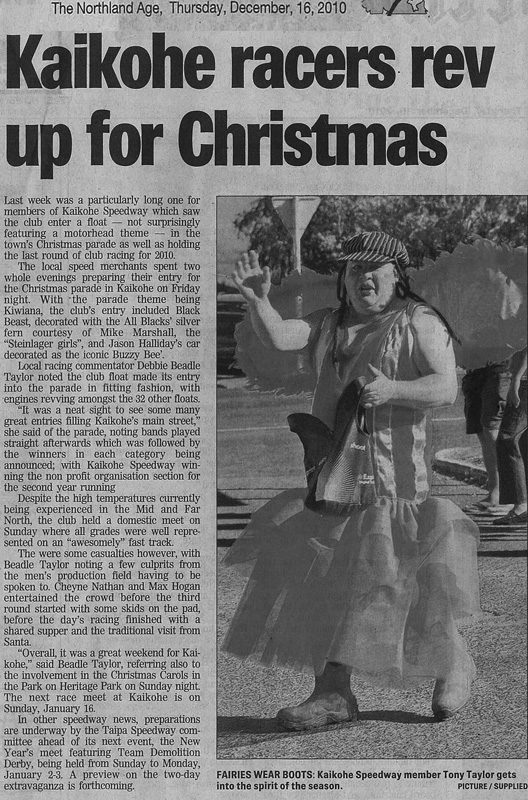
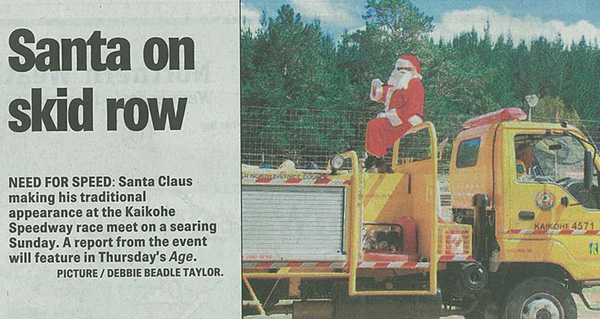
Northland Age 7th December 2010
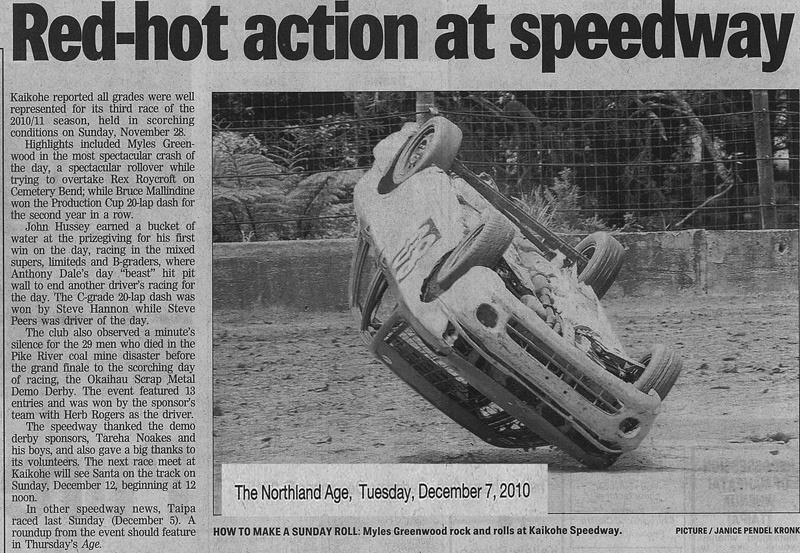
Northland Age 30th November 2010
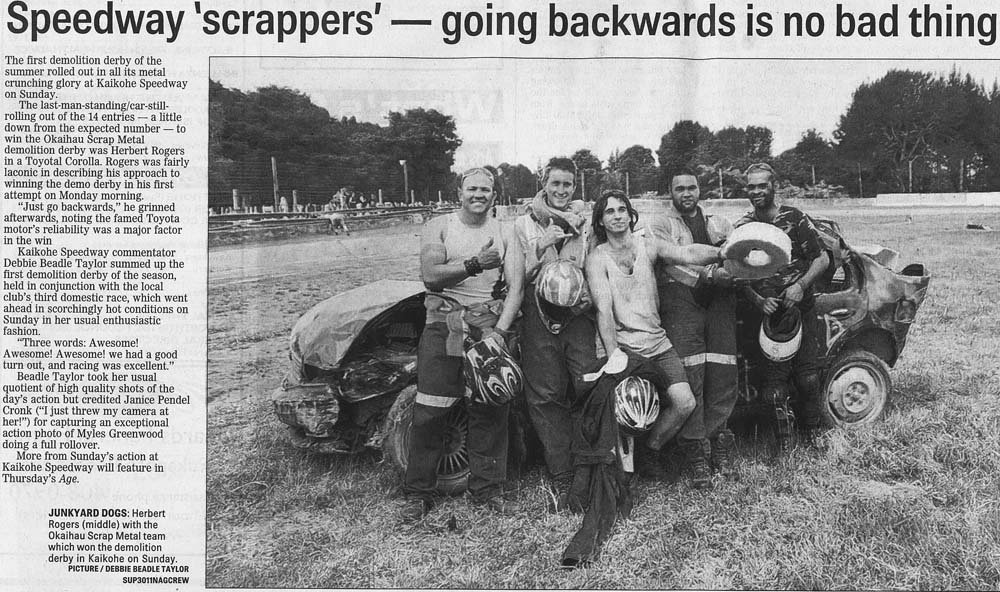
Northern News 17th November 2010
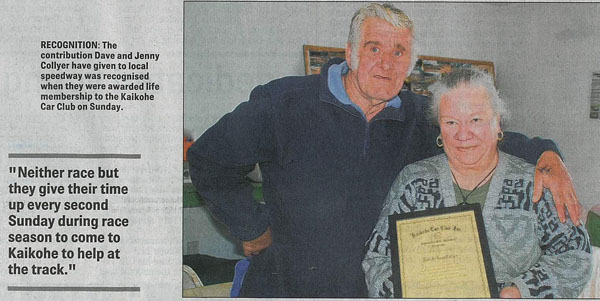
Northland Age 25th November 2010
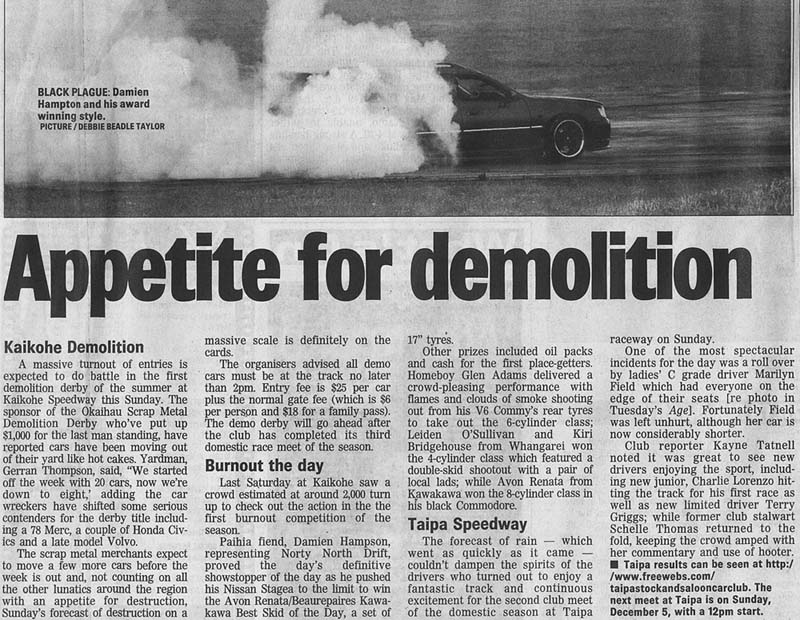
Northland Age 23rd November 2010
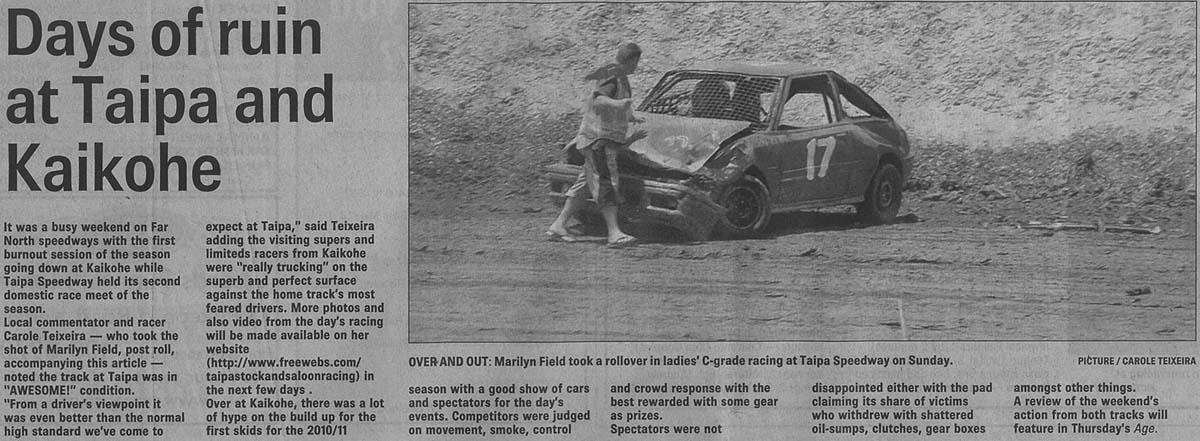
Northland Age 18th November 2010
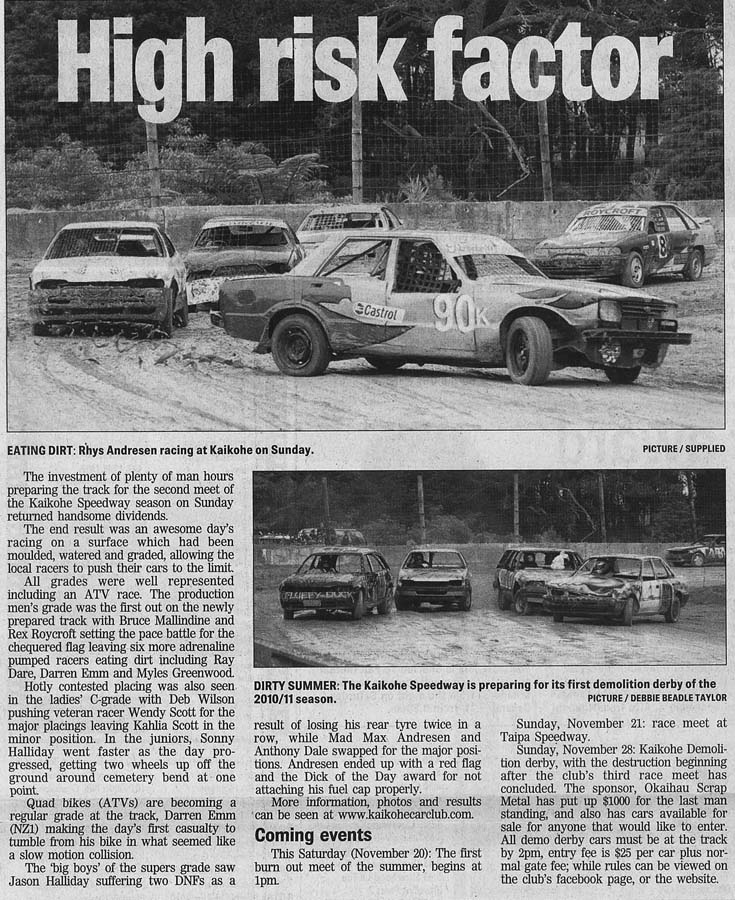
Northern News 17th November 2010
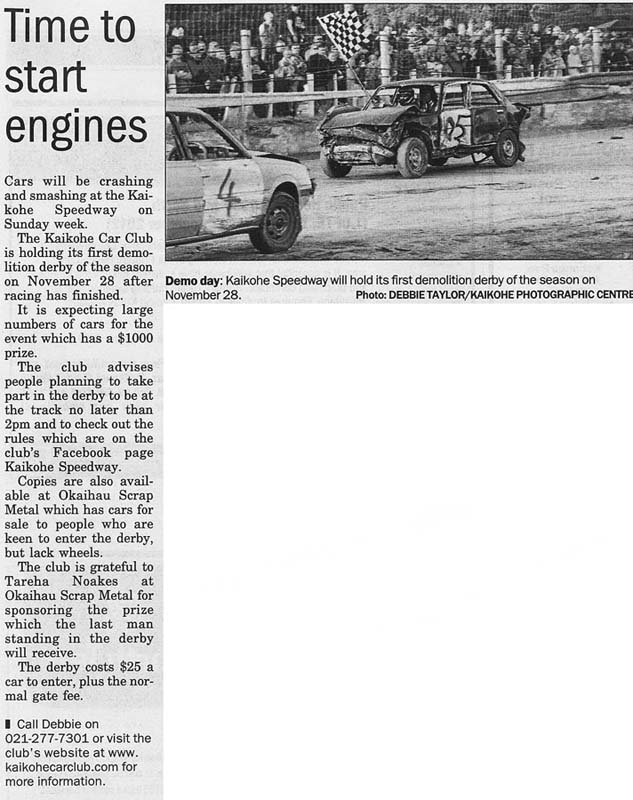
Northern News 1st December 2010
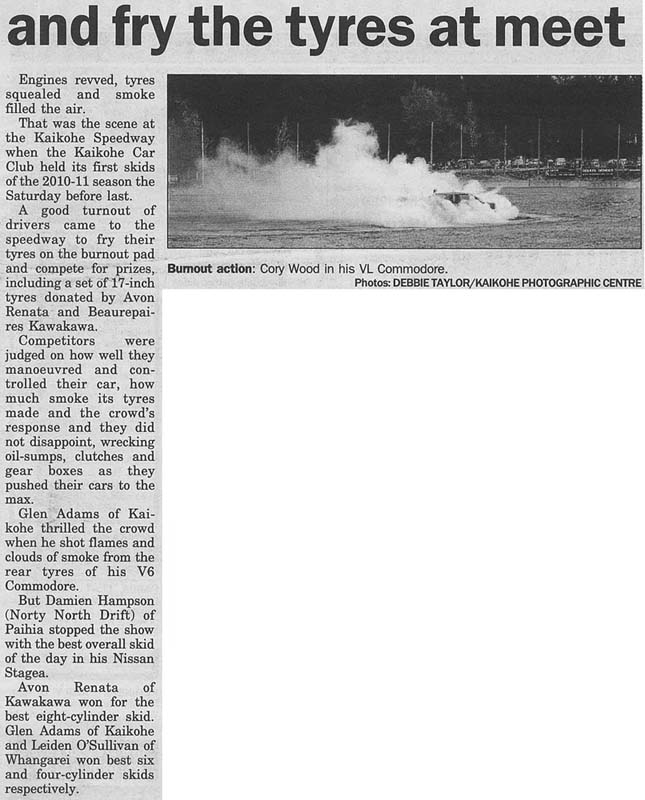
NORTHLAND AGE 15TH NOVEMBER 2010

NORTHERN NEWS 9TH NOVEMBER 2010
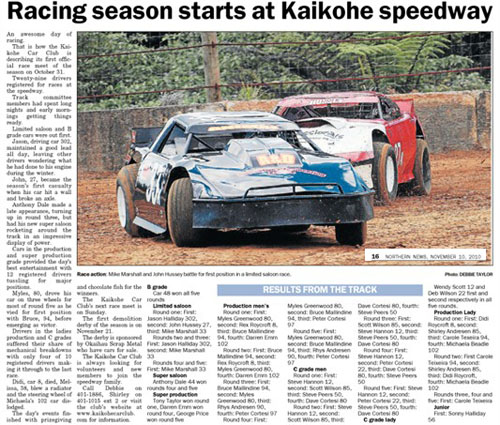
An awesome day racing was has
yesterday 31st Oct, the track committee had spent long nights and
early mornings preparing the track for the days event in the days leading up to
our first official race meet of the new season. We had a good turn out with 29
drivers registering for the days events. LTD and B Grade were out first with
Jason 302 leaving the other drivers wondering what he had done to his engine
over the winter as he maintained a good lead over the day; John 27 however was
the first casualty of the season when the axel broke and he had a coming
together with the wall; Anthony Dale had a late appearance (turning up in round
3) but definitely had his new Super Saloon rocketing around the track with a
very impressive display of power. Production and Super Production was the
biggest grade with 12 registered drivers for the day these guys are always good
to watch as they tussle for the major positions by far the best race of the day
was round five as Myles 80 was on three wheels for most of the race as he
swapped the first position with Bruce 94 during the entire race emerging the
victor. Lady’s Production and C had its share of mechanical breakdowns staring
with 10 registered drivers and finishing with 4 on the last race – Didi car 8
cease to go at all; Melissa 38 blew a radiator; Michaela’s 102 car had the
steering wheel dislodge while racing.
The days events finished with prize
giving and “chocolate Fish” for the winners with the Highlight being Dave and
Jenny Collyer been presented with Life Membership to the Club.
A little bit about the Collyer’s –
Dave and Jenny live in Donnellys Crossing, Dargaville and have been active
members of Kaikohe Speedway for the last 10 years; Neither Dave or Jenny race
but the give every second Sunday (during race season), to come to Kaikohe to
help at the track. Jenny is out head Lap Scorer and Dave has done a number of
jobs over the time they have been coming to the track just recently going from
starter to been in charge and training of Crash Crew. Dave and Jenny have been
involved in Speedway for 47 years and are part of the original founding members
of Waikaraka Speedway; Dave was racing Stock Cars at this stage between 1965 –
1970 car number 29. They then moved to Dargaville and helped out at Dargaville
Speedway for a number of years before dedicating themselves to Kaikohe. Both the
Collyers are heavily involved with Rural Fire and Dave is fully trained in all
aspects of Rural Fire.
Don’t forget if you would like to be
part of our speedway family we are always looking for volunteers and new
members are always welcome
Our next race meet is on the 14th
November 2010 and the first of our infamous Demolition Derbies is on the 21st
November sponsored by Okaihau Scrap Metal - Tareha and the boys from Okaihau
Scrap metals also have cars for sale.
For all enquires contact Debbie 09
4011886 or Shirley 09 4011015 ext 2 or visit the clubs website
www.kaikohecarclub.com
NORTHLAND AGE NOV 2010
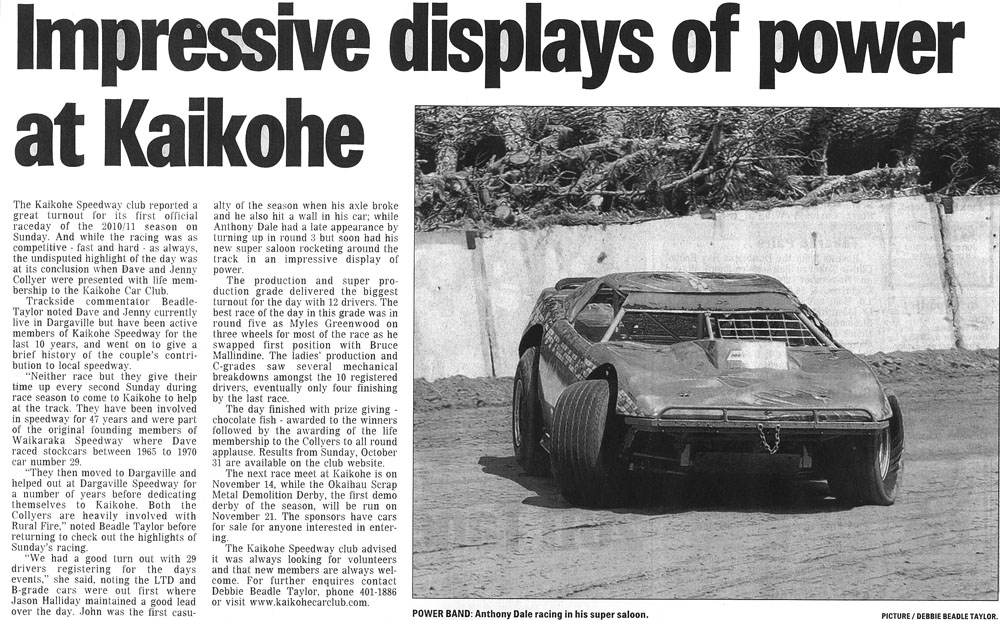

NORTHERN NEWS 9TH NOVEMBER 2010
ERIC Molving owes his
life to the National Burn Centre.
Eric was racing his
turbo-charged speedway saloon down Whangarei Speedway's dirt track
in February 2008 when he got tapped by another racer and veered into
a bank.
The speedway
enthusiast survived a horrific crash and severe burns to his entire
body and is dubbed a walking miracle by doctors.
"I was going for the
overtake of the second-place driver when he nudged me and sent me
into the wall," Eric says. "My car somersaulted and landed on its
side."
The petrol cap came
off and fuel poured all over the vehicle – and Eric.
"I blacked out when
the car hit the wall but came to when the car stopped. I was sitting
there thinking `this isn't good'."
The hot exhaust
ignited the fuel.
"I was a human wick,
soaked in petrol," Eric says.
It took 26 seconds to
get the fire under control. During that time Eric received burns to
most of his body.
"They were surprised I
was still alive," he says. "I staggered out of the car and they
began to pour water on me. I remember thinking how good the water
felt on my hot body but I didn't feel pain."
Eric was airlifted to
Middlemore Hospital and immediately treated.
"I was in an induced
coma for 40 days and on life support for three months. I had tubes
coming out from everywhere, water on my lungs, a urinary infection
and was given strong antibiotics. I lost hearing in one ear and
sight in part of one eye. They had to amputate six of my fingers.
But I survived."
Eric was sent home
five months later after more than 45 operations.
"My elbow was locked
up for 18 months so they gave me a brace to help support it, but I
needed to bend the brace to release pressure from my arm. I
developed a pulley system so I could adjust it myself."
Doctors were impressed
with the idea and adapted their entire arm brace stock as a result.
"The hospital staff
were absolutely fantastic," Eric says. "It wasn't just the top
facilities that were great or the extremely skilful doctors and
competent nurses – the thing that has stuck with me the most is that
from the top down the people really cared for me.
"They wanted me to
recover and were genuinely caring. That changed me."
Eric was a property
valuer but now wants to sail around the Pacific and head back to
work.
"The hardest part has
been the emotional trauma," he says.
"Physical pain you
just handle. But this is not terrible, this is just a set back. I'm
alive and can live a pretty full life. I want to go to the grave
with memories – not regrets, and this is one of those memories."
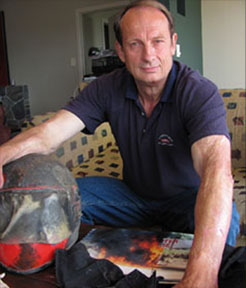
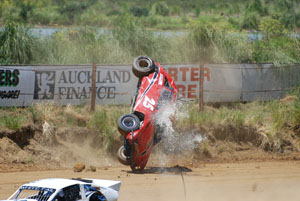
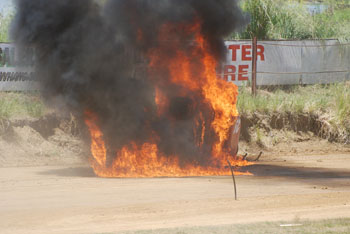
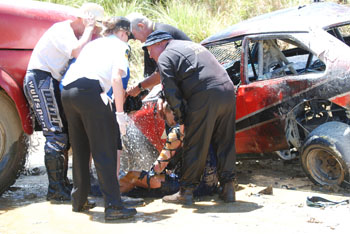
HORROR CRASH: B grade
saloon car driver Eric Molving crashed at Whangarei Speedway on
February 2, 2008.
Fuel soaked the car
and within seconds caught alight.
Eric was in the car
for 26 seconds before the fire was under control.
watch appeal Eric's Video Here
Eric's accident Video Here
NZ
Herald 14th October 2010
Sale of safety gear rockets after teen's speedway
death
Neck and
head restraints are being fitted into youth ministock speedway cars after
the tragic death of Tauranga teenager Samantha Mouat at Easter.
The big
increase in sales of the restraints leading up to the start of the new
speedway season has been put down to Samantha's widely reported accident.
Although a
coroner's inquest is still to be held, junior drivers have been pro-active
after hearing through the sport's grapevine that Samantha died from a broken
neck.
A leading
campaigner to improve the sport's safety is Bernie Gillon, of the Tauranga
firm Flamecrusher, which sells driver safety suits and other protective
equipment.
Mr Gillon
said lessons had been learned from the fatal accident at Kaikohe Speedway's
Easter Stampede, despite there being no pre-season announcements from the
sport's two governing bodies.
Samantha
died at the Far North meeting when her ministock ploughed head-on into the
track's concrete block wall.
Mr Gillon
said it was simple physics that accidents were nearly always fatal if a
driver using standard safety restraints hit a concrete wall head-on at
100km/h.
Luckily,
that style of accident was rare, he said, but technology existed to stop it
being fatal and Samhantha did not have that technology in her car.
Mr Gillon
said Samantha had been no different from 95 per cent of other ministock
drivers last season.
However,
since the accident, a lot of families had decided to put their children in
head and neck restraints.
"The trend
is going the right way but it is still not enough."
The $800 to
$1900 cost put a lot of people off, particularly when the cost of a
ministock car might be $2000, Mr Gillon said.
Independent
crash tests had proved that head and neck restraints were effective. Drivers
had walked away from crashes when the forces had been much higher than in
Samantha's crash.
The issue
with New Zealand's stock cars was that they did not have a crumple zone.
Instead of a crash pulse of 90 milliseconds, the pulse was eight to 10
milliseconds.
The problem
was compounded when the driver was a young person who had not developed the
skeletal frame and muscular strength of an adult, Mr Gillon said.
"They
cannot absorb the shocks of an adult frame ... More stringent safety rules
were needed to manage the forces put on them."
Speedway
New Zealand president Peter Kuriger said its investigation into the fatal
accident did not apportion blame.
However, it
had given the group a "whole pile of information" to check to see if any
inadequacies were included in procedures.
"A lot of
the stuff is already in place but there are always things we can improve
on."
The
accident happened on a track licensed to the Circle Track Racing
Association, not Speedway New Zealand.
Circle
Track Racing spokeswoman Debbie Beadle-Taylor would not comment on whether
any procedures would be changed for the new season. "We are waiting for the
coroner's report to come out."
NZ LINK TO STORY HERE
NORTHLAND AGE 20TH OCTOBER 2010
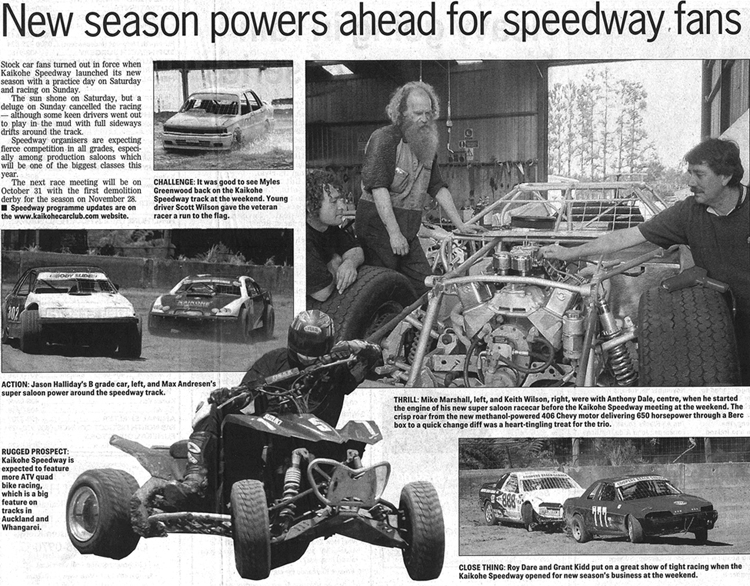
NZ DIRT TRACK 2010



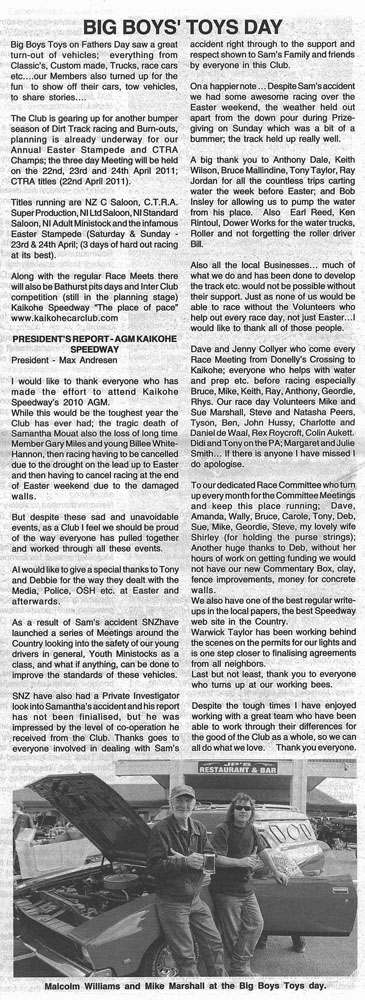
NORTHLAND AGE 14TH SEPTEMBER 2010

NORTHERN NEWS 15TH SEPTEMBER 2010
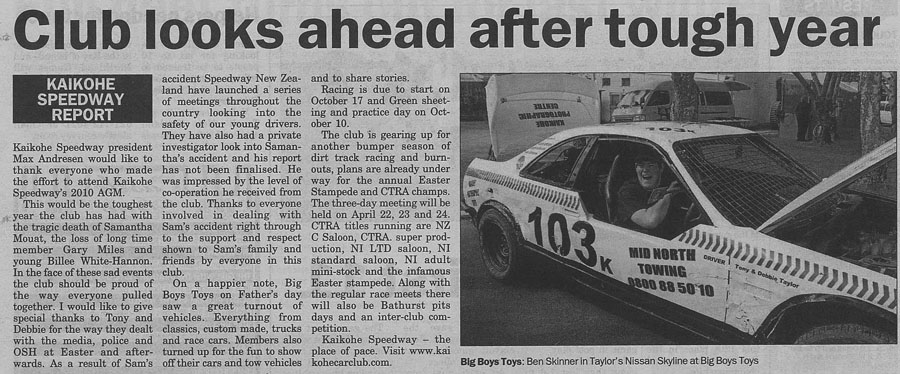













 Northland Age March 2011
Northland Age March 2011



























